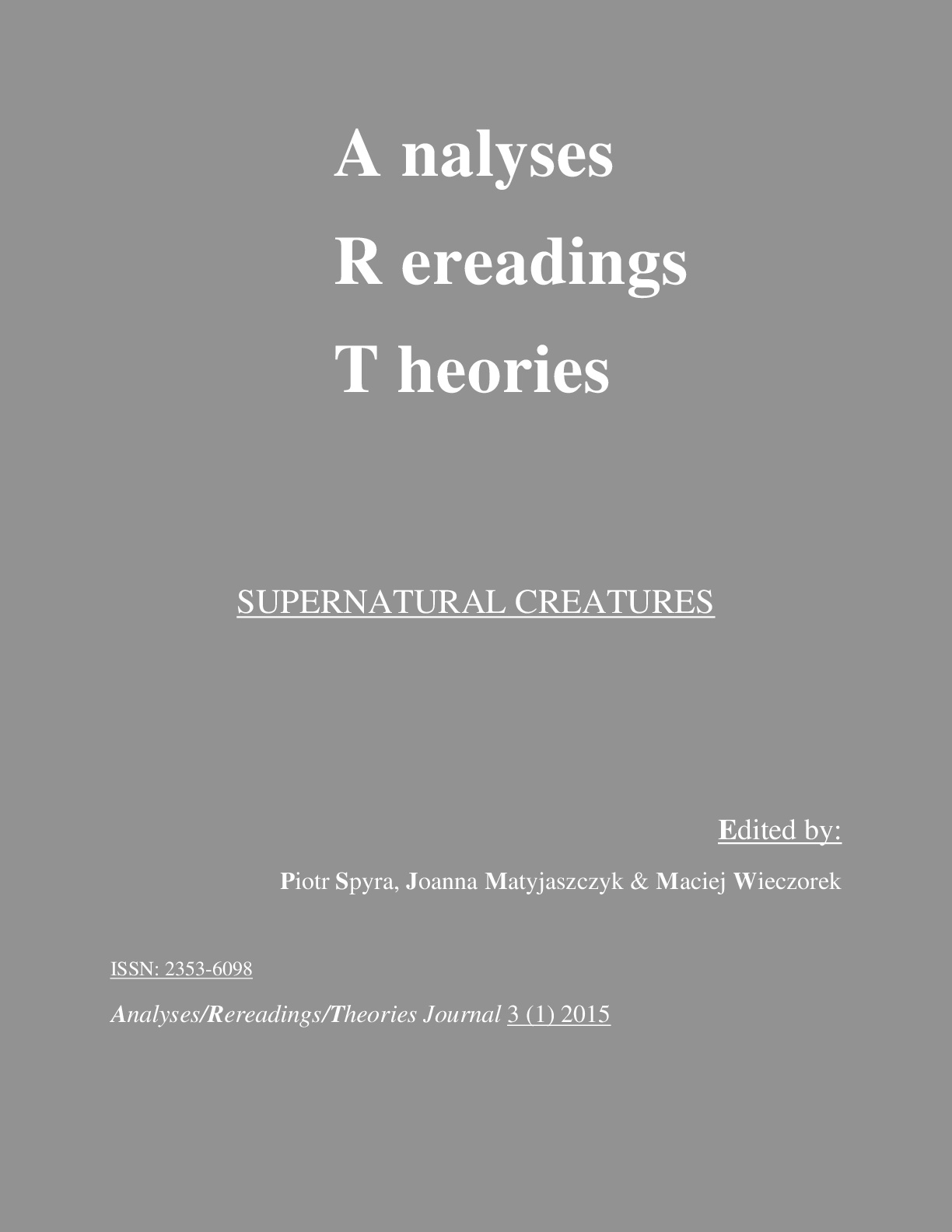The Ambiguous Identity of a Dog as a Mongrelized Storyteller in John Berger's King (1999)
The Ambiguous Identity of a Dog as a Mongrelized Storyteller in John Berger's King (1999)
Author(s): Halszka LeleńSubject(s): Studies of Literature, Theory of Literature
Published by: Wydawnictwo Uniwersytetu Łódzkiego
Keywords: John Berger; point of view; dog as narrator; genre conventions; English dog idioms; post-fantastic characterisation; magic realism; ambiguity of character;
Summary/Abstract: The dog named King, the central character and narrator of John Berger’s “King” published in 1999, is the offshoot of many apparently incongruent genre conventions as well as the offspring of the ambivalent prejudice and praise of the species encoded in the English idioms. This presentation aims to overview the contributing elements which gave rise to the Bergerian shift in character-narrator shaping and to discuss the function of such perspective for the novelistic format adopted. The discussion points out the central role of the ambiguity of King as a dog, demonstrating the post-fantastic nature of his characterisation rooted in the conventions of magic realism. The patterns used to shape King, the dog, as one of the community and at the same time the Other are discussed. He is a befriended dog who becomes almost a family member for the beggars and, at the same time, he is the other, different species. He is both one of the homeless and at the same time the independent one, the stranger who sees more because of the distance inscribed into his nature of a rambling dog. Such is also the function of the fantastic in his shaping, as it is sometimes not quite clear that he is just a talking dog, derived from the tradition of animal fable. He might as well be taken as a mentally challenged human being who lost his identity. The merging of perspectives on all levels of the novel contributes to the dialogic quality of the narration in the Bakhtinian sense, to which the central ambiguities inscribed in the shaping of the quasifantastic dog add the quality of uncertainty and polyvalence.
Journal: Analyses/Rerearings/Theories (A/R/T) Journal
- Issue Year: 3/2015
- Issue No: 1
- Page Range: 1-11
- Page Count: 11
- Language: English

